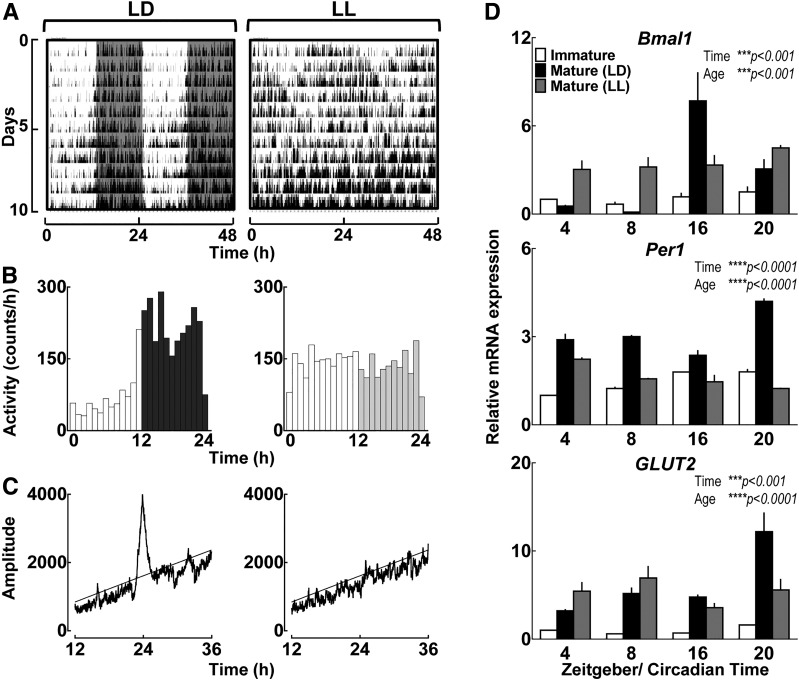Figure 4.
Postnatal establishment of global behavioral circadian rhythms is required for maturation of circadian clock function in pancreatic islets. Representative behavioral profiles (actograms) of circadian activity (A) and mean circadian activity (expressed as counts/60 min) (B) shown across the 24-h day in rat pups monitored for 10 days under either LD cycle or LL exposure during early postnatal period (days 2–12). Shaded areas represent periods of dark. C: Representative χ2 periodograms of activity recordings in LD-exposed (left) vs. LL-exposed (right) pups. Horizontal lines represent statistical significant threshold in determination of dominant circadian period. Note the absence of circadian period in LL pups. D: Normalized Bmal1, Per1, and Glut2 mRNA expression obtained from whole islet lysates of immature (2–5 days old) and mature (30 days old) rat pups exposed to either LD or disrupted LL circadian cycle during the postnatal period (days 0–30) and collected during ZT 4 (1000 h), 8 (1400 h), 16 (2200 h), and 20 (0200 h). Values are mean ± SEM (n = 3–5) fold change with immature pups at ZT 4 set as 1. Statistical significance was determined by two-way ANOVA with Sidak multiple comparisons test to assess effects of time and age (GraphPad, version 6.0). ***P < 0.001; ****P < 0.0001. Data for “Immature” and “Mature (LD)” islets are replotted from Fig. 2A.

